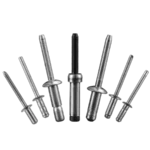Table of Contents

Magnesium alloy structures are commonly used as structural components in automobiles, so how is it held in place? Automakers typically use suction rivets to secure magnesium structures.Which Rivet is Used for Riveting Magnesium Alloy Structures?Let’s explore it together!
Table of Contents
What is Magnesium Alloy?
Magnesium alloys are alloys consisting of magnesium with other metal elements such as aluminum, zinc, manganese and silicon. Magnesium is one of the lightest structural metals on earth. Magnesium alloys are lightweight and strong structural metals that are widely used in areas where weight reduction is required. However, magnesium alloys have poor corrosion resistance and require special corrosion protection in certain applications.

Material Composition of Magnesium Alloy Structures
| Magnesium Alloy Type | Main Alloying Elements | Properties |
| Aluminum-Zinc Magnesium Alloy | Aluminum (Al), Zinc (Zn) | High strength, good corrosion resistance, higher strength than standard magnesium alloys |
| Aluminum-Manganese Magnesium Alloy | Aluminum (Al), Manganese (Mn) | Excellent corrosion resistance and castability, suitable for casting complex parts |
| Zirconium-Based Magnesium Alloy | Zirconium (Zr) | Grain refinement, excellent mechanical properties, suitable for high-strength applications |
| Rare Earth Magnesium Alloy | Neodymium (Nd), Yttrium (Y), Cerium (Ce) | Exceptional high-temperature strength, corrosion resistance, creep resistance |
| Zinc-Based Magnesium Alloy | Zinc (Zn) | Increased strength, moderate corrosion resistance, easily machinable |
| Calcium-Based Magnesium Alloy | Calcium (Ca) | Good heat resistance, excellent biocompatibility, suitable for medical applications |
| Magnesium-Silicon Alloy | Silicon (Si) | Increased hardness, wear resistance, excellent castability, suitable for complex castings |
Why Use Rivets to Riveting Magnesium Alloy Structure?
From the above reading, I believe you already know the characteristics of magnesium alloy structure. So why use rivets to rivet magnesium alloy structures? Here are a few of the main reasons:
1. Lightweight
Magnesium alloy is one of the lightest structural metals and is widely used in industries that require weight reduction, such as aerospace and automotive manufacturing. Compared to other fasteners, blind rivets are lightweight, especially those made of aluminum alloys or titanium alloys, and can be used with magnesium alloy structures to keep the entire assembly lightweight without adding additional weight. This is critical for applications (e.g., aerospace, automotive) where lightweighting is pursued.
2. High Specific Strength
Magnesium alloys have a good strength ratio (strength to weight) and are able to provide adequate strength at lighter weights.
And the high mechanical joint strength of the blind rivet can provide reliable fastening force for magnesium alloy structures. Especially under dynamic loads or vibration environments, blind rivets are able to maintain a stable connection and prevent magnesium alloy structural components from loosening.
3. Dispersing Stresses and Reducing Damage to Magnesium Alloys
Although magnesium alloy has high strength, but its material is relatively brittle, easy to crack or rupture when subjected to concentrated pressure. In the blind rivets, there is a type called large flange pop rivets, this type of blind rivets has a large head contact surface. It is able to disperse stresses and prevent magnesium alloys from being subjected to excessive localized pressure, thereby reducing the risk of material cracking.
4. No Need for Heat Treatment, Reducing Heat Effects
Magnesium alloy structures are sensitive to temperature changes and are prone to performance degradation or deformation due to heat treatment. And the Blind Rivet is to fix the magnesium alloy structure by mechanical connection instead of heat treatment. This approach avoids the effects of high temperatures on the magnesium alloy structure. Compared with welding and other processes, riveting does not change the mechanical properties and surface characteristics of magnesium alloy.
5. Corrosion Resistance and Electrochemical Compatibility
Magnesium alloy has poor corrosion resistance. Therefore, when selecting fasteners, the electrochemical compatibility of the material needs to be considered. Aluminum blind rivet can be compatible with magnesium alloy to avoid galvanic corrosion.
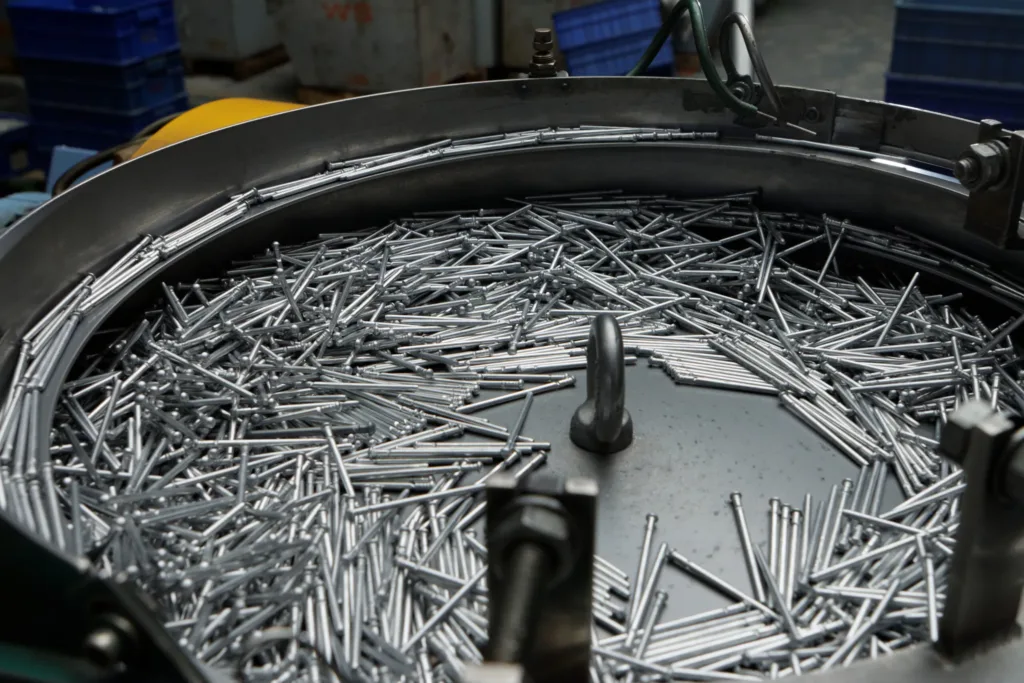
Contact Our Engineers Today
We provide you with high quality rivets, including customized services.
Which Rivet is Used for Riveting Magnesium Alloy Structures?
Magnesium alloy structures have certain requirements for the use of blind rivets, not all blind rivets can be connected to magnesium alloy structures. Rivets used for riveting magnesium alloy structures must be lightweight, high strength, and corrosion resistant. In order to avoid galvanic corrosion problems, the blind rivet material must be compatible with the magnesium alloy material. The following types of rivets are suitable for riveting magnesium alloy structures:
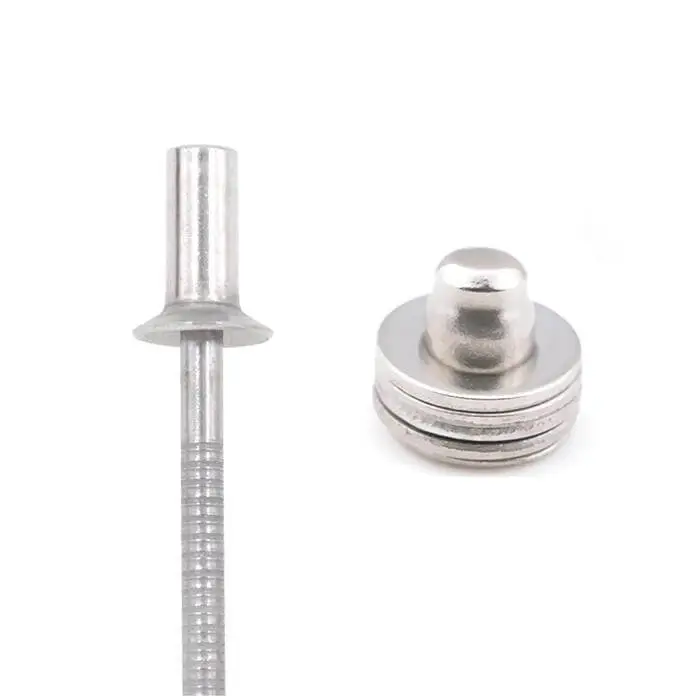
The most commonly used raw material for blind rivets connecting magnesium alloy structures is aluminum. Aluminum blind rivets are lightweight, have good corrosion resistance, and have relatively good electrochemical compatibility with magnesium alloys, reducing electrochemical corrosion caused by potential differences.
In addition, aluminum blind rivets and magnesium alloys are light metals, in some of the requirements of lightweight applications, their match is very suitable. Common aluminum alloy rivet models include 5056, 6061 and so on.
Titanium Blind Rivets
The electrochemical compatibility between titanium alloys and magnesium alloys is relatively good, and can avoid corrosion caused by potential difference. So titanium alloy blind rivets are very suitable for riveting magnesium alloy structures.
Titanium alloy rivets have many advantages, including light weight, high temperature resistance and corrosion resistance. If your magnesium alloy structure is in a harsh environment, then titanium blind rivets are perfect for your project.
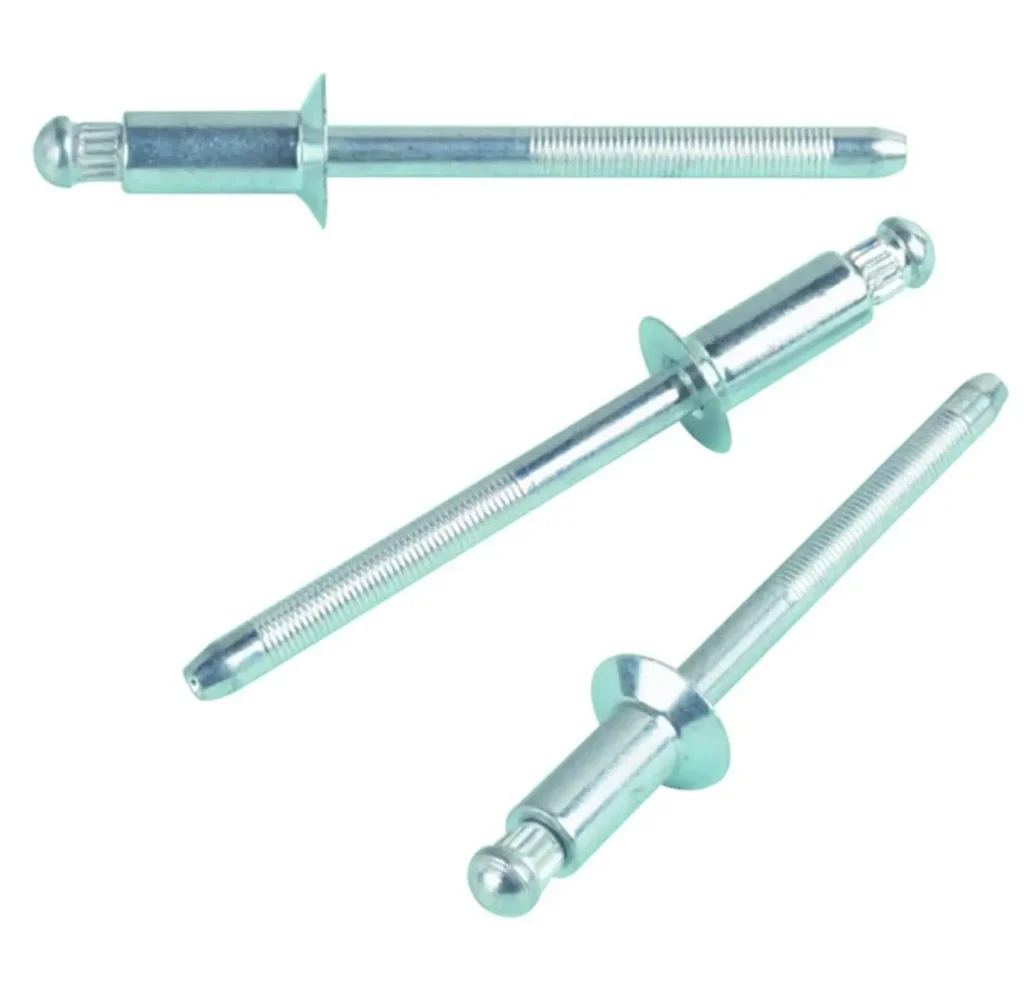
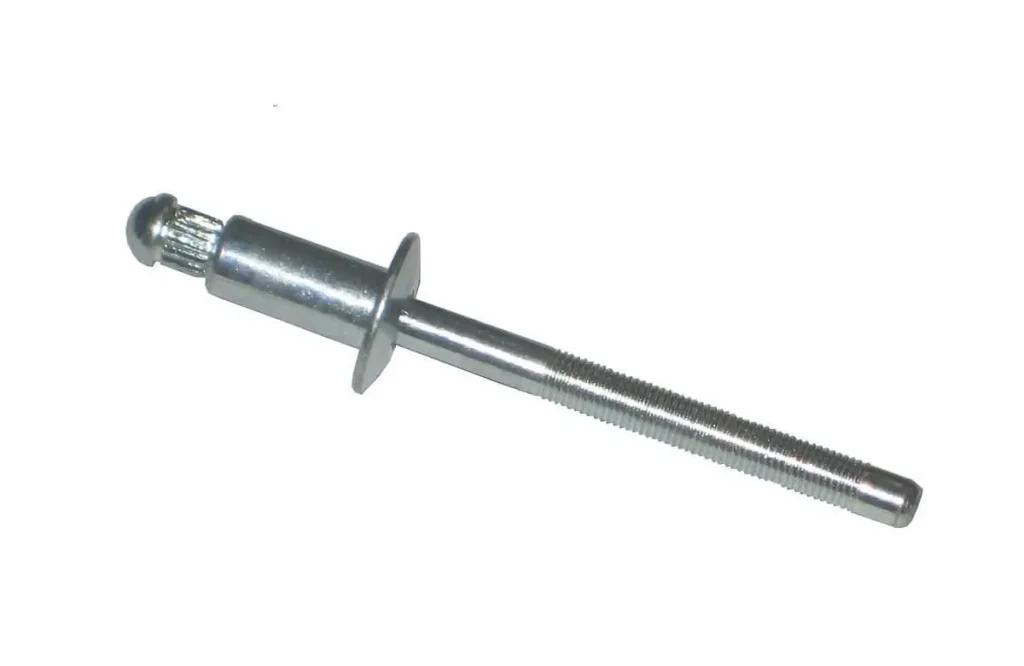
Stainless steel blind rivets offer excellent corrosion resistance and high strength, but they are denser and heavier and not as lightweight as aluminum and titanium alloys.
If your project requires high strength and durability, then stainless steel blind rivets must be and you. It should be noted that there may be galvanic corrosion problems between stainless steel and magnesium alloys, which usually requires the use of isolation coatings or electrical insulation measures.
Coated Rivets
When riveting magnesium alloy structures, special attention needs to be paid to the problem of galvanic corrosion. Therefore, if it is necessary to use rivets that are not fully compatible with magnesium alloys (such as stainless steel or other metal rivets), the surface of the rivet needs to be coated with an anti-corrosion coating, such as anodized aluminum or zinc plating. This is a good way to avoid corrosion caused by electrochemical reactions.
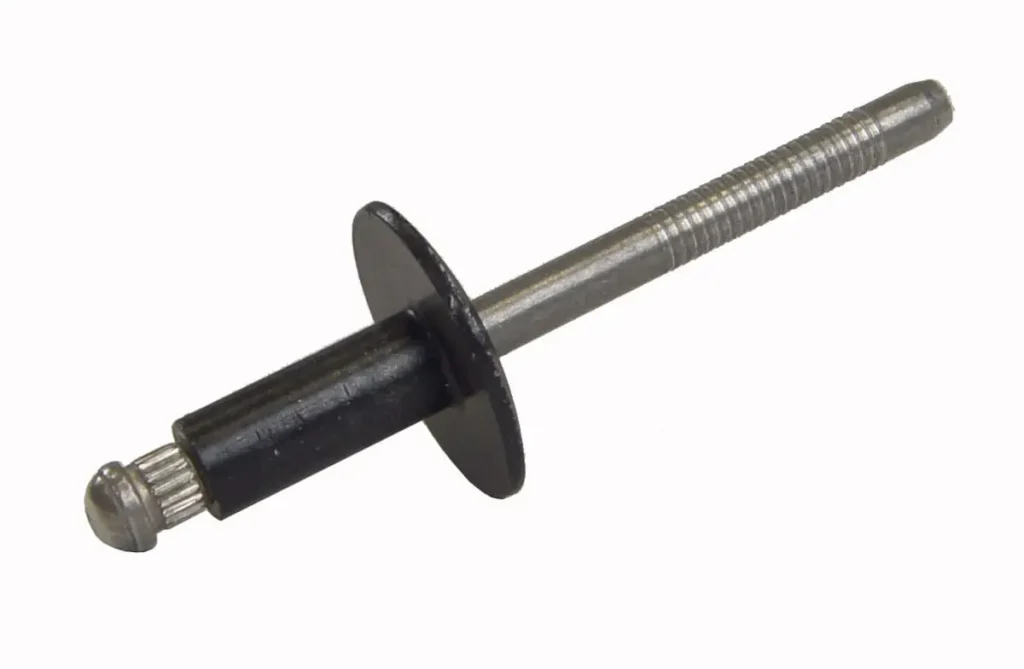
Tips of Blind Rivets for Riveting Magnesium Alloy Structures
There are many factors to keep in mind when riveting magnesium alloy structures using blind rivets. There are many challenges that can arise during the riveting process in order to achieve optimal riveting results. Below are a few important points to keep in mind.
1. Choose Rivet Materials with Good Structural Compatibility with Magnesium Alloy
Magnesium alloy is prone to electrochemical corrosion with dissimilar metals under humid or salt spray environment. Therefore, in order to avoid this situation, it is very important to choose the right rivet material. The following types of rivets can be riveted to magnesium alloy structures:
- Aluminum blind rivets: and magnesium alloy has close electrochemical properties, reducing the risk of corrosion caused by potential difference.
- Titanium alloy rivets: Although more expensive, they have excellent corrosion resistance and are suitable for demanding environments.
- Surface-coated rivets: If steel or stainless steel rivets are used, an anti-corrosion coating (such as galvanized or anodized) is required.
2. Selecting the Right Rivet Head Type
Magnesium alloy structure is generally more brittle, it is recommended to use large flange rivets (Large Flange Rivets). This kind of rivet head is larger, can disperse the pressure, prevent the magnesium alloy in the fastening of local rupture or cracking.
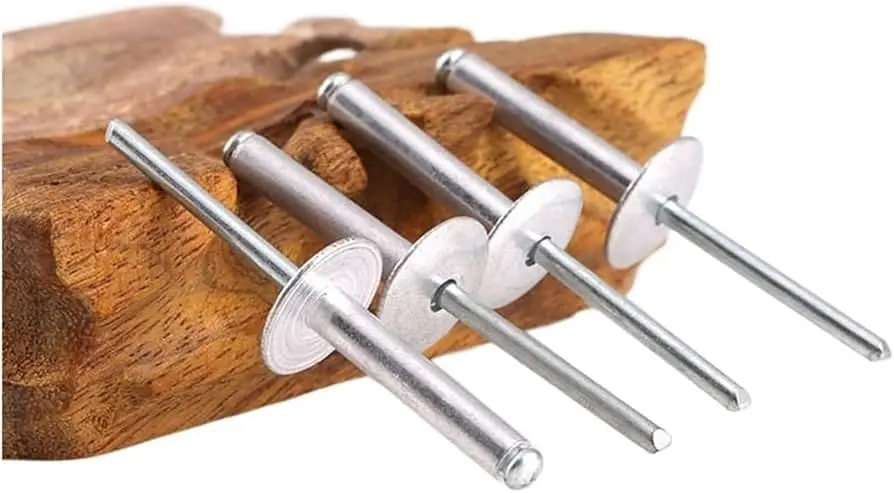
3. Control the Applied Force
When riveting magnesium alloy structures, drilling suitable pilot holes first can effectively prevent the material from cracking or tearing. When riveting with a rivet gun, the force applied should be controlled to ensure uniform pressure. Excessive pressure may cause damage to the magnesium alloy structure. When using a pneumatic or electric rivet gun, set the appropriate pull force to avoid over application of force.
4. Surface Treatment of Magnesium Alloy
Magnesium alloy itself is prone to oxidation and corrosion, before riveting should be anodized or coated with anti-corrosion coating treatment.
In addition to this, before riveting, ensure that the surface of magnesium alloy is free of oil, dust and corrosion products. This will ensure close contact between the rivet and the magnesium alloy and prevent the connection from loosening.
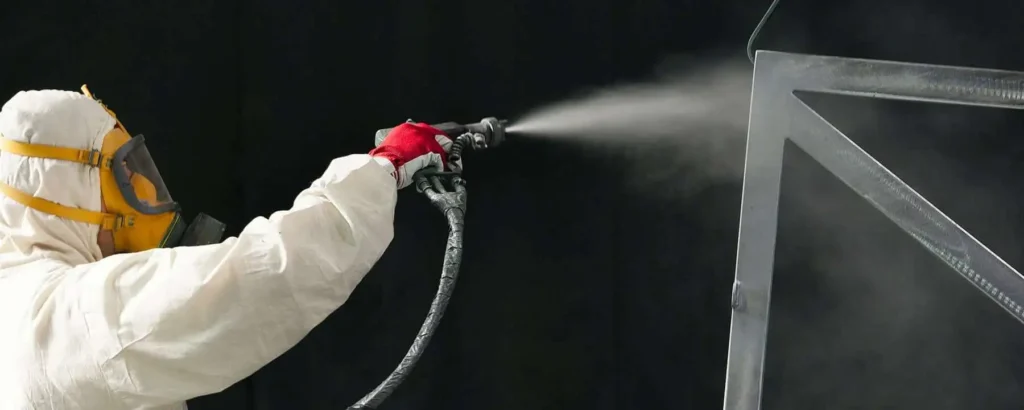
Frequently Asked Questions
What Surface Treatments are Needed for Magnesium Alloy Structures to Improve Corrosion Resistance?
Magnesium alloy itself has poor corrosion resistance, it is recommended to anodize or anti-corrosion coating on magnesium alloy before riveting to improve its corrosion resistance and avoid damaging the surface of the material during riveting.
How to Avoid Thermal Effects when Tiveting Magnesium Alloys Using Blind Rivets?
Magnesium alloys are temperature sensitive and heat treatment may result in degradation or deformation of the material. Blind rivets are mechanically attached without the need for high temperature treatment, thus avoiding thermal effects and ensuring the structural integrity of the magnesium alloy.
How to Treat the Surface of Magnesium Alloy after Riveting is Completed?
After riveting is complete, it is recommended that the exposed riveted joints and surrounding areas be coated with an anti-corrosion coating. This protects the magnesium alloy from moisture or salt spray, thereby extending the life of the structure.
Conclusion
I believe that through the above reading, you have a clear understanding of the question “Which Rivet is Used for Riveting Magnesium Alloy Structures? If your project requires the use of blind rivets on magnesium alloy structures, please contact our engineers!


